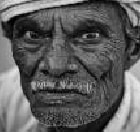As humans we have read faces since the beginning of time. Before we could communicate in words we relied on the ability to read facial expressions and facial features for our survival; to recognise friend from possible foe.
We looked for facial expressions to determine the level of threat from the indicators of other people’s emotional state; if they are friendly or whether they mean us harm. We use their facial features to help us recognise if they are someone we know or if they are strangers.
Both skills are hardwired in us. A new born child can detect the emotional state of anyone the moment they come in contact with them. The skill of reading faces is so heightened in newborns because their total consciousness is focussed on their comfort and safety. From the moment they can see, the child begins to build memories of the people around them and they start to recognise familiar faces by remembering facial shapes and features.
Research has shown that young children have an uncanny ability to read the emotional state of those around them with very high accuracy but that ability begins to drop away as they get older. Obviously, as their needs for safety and security are met, the other requirements of day to day life directs their focus elsewhere. As we grow and become more involved in other aspects of life the ability of reading people appears to be lost. The skill is hardwired in and as such it’s just like a muscle, it atrophies and grows weaker when it’s used less. The skill isn’t lost, it just loses its accuracy through lack of practice and natural human growth. Reactivating the skill is what Human Pattern Recognition is about.
Recognising facial expressions and features are two separate skills yet they become entwined; or more accurately the information we gain from them becomes entwined, and in many case confused. We may mistake the feeling we get from a facial feature with a reaction we would normally get from an emotional expression. Understanding the difference between them is important.
At the same time it’s human nature to generalise and group information that appears similar. We often draw on past experiences to form decisions around present situations. Research shows that we generalise, delete and distort information every moment of everyday. In fact to function we have no choice but to operate this way. Because of this we might see a face that reminds us of someone who may had wronged us in the past and our immediate response to the new person is to distrust them and, more often than not, lead us to misjudging them. That response causes us to miss the other indicators that expose their true self. This why I have brought together the 4 distinctly different skills of reading people (How to Read Body Language, Reay Facial Expression, Human Trait Recognition and Neuro Linguistic Programming) under the one umbrella of Human Pattern Recognition. This way I can show people how to read the different indicators individually yet show you how to evaluate the results together in the bigger picture.
